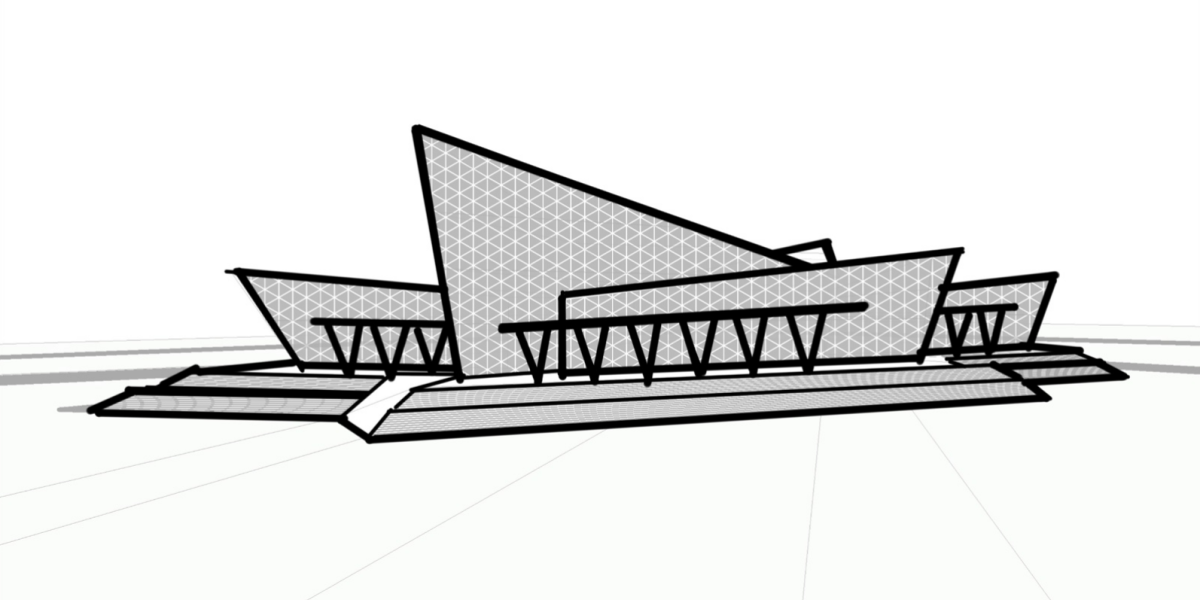Safety cases or safety reports serve a vital part in high-risk industries, showcasing the sufficiency of safety measures and facilities. They record proof of safety control measures, meeting health and safety rules. But safety cases spread beyond high-risk industries, providing a valuable method to tackle safety matters and secure stakeholder approval in various projects. In this blog, we delve into the role of safety cases in significant infrastructure projects. Here, emphasis is placed on the method we’ve honed and the advantages it generates.
Table of Contents
Safety Cases in High Hazard Industries
In the UK, industries with high hazards must abide by safety regulations. Such industries include hazardous materials handling, under the Control of Major Accident Hazards (COMAH) Regulations. Oil and gas extraction, governed by Offshore Installations (Safety Case) Regulations, and rail networks, under Railway Safety Case Regulations, also fall within this category. These stringent regulations compel companies to compile safety reports.
These detailed reports must provide credible evidence of adequate safety measures and compliance with the ALARP (As Low As Reasonably Practicable) principle. The idea here is to amass a body of documented evidence. This evidence provides compelling arguments about the safety of a particular system within a given application and environment. Thus, presenting proof to various stakeholders that safety isn’t being taken lightly.
Challenges in Major Infrastructure Projects
Major infrastructure projects such as transport systems, utilities, or airports pose significant health and safety hurdles during their formation, functionality, and preservation. Regardless of not living under stringent hazard safety rules, a collection of health and safety laws still supervise their operation.
Adding complexity to decision-making processes, tangible factors like upkeep, emergency actions, costings, and non-safety-associated risks demand further scrutiny. With multiple interested parties in the game – project chiefs, operators, designers, emergency responders, maintenance crews, and the public – conflicting interests could yield potential safety trade-offs.
With these challenges at play, it’s crucial to identify, demonstrate, and agree on the optimum safety approach. This makes a rock-solid safety case an indispensable tool in systems engineering.
Safety Case Process for Infrastructure Projects
The authors have implemented a safety case approach to facilitate decision-making in infrastructure projects. A multidisciplinary team, comprising health and safety specialists experienced in high hazard industries and experts in the construction industry, was involved in creating the safety case. The process involved several key steps:
Assessment
1. Identification of Safety Case Requirements: Safety cases were developed to address specific safety concerns raised during risk workshops or HAZOP studies, focusing on critical issues requiring consensus among stakeholders.
2. Detailed Hazard Review: Face-to-face discussions and interviews were conducted with interested parties, including operators, maintainers, design teams, and experts. This review allowed for a better understanding of hazards, available safeguards, and practicalities related to different options.
3. Assessment of Options: Each option was reviewed against codes, standards, and best practices, including hardware safeguards and management systems. Residual risks were evaluated through qualitative and quantitative risk assessments, cost-benefit analyses, and comparisons with other industrial activities.
4. Stakeholder Consultation: The findings were presented to stakeholders to gain consensus on the preferred option, ensuring their concerns were addressed and agreement was reached on the way forward.
Reporting and Stakeholders
5. Safety Case Report Construction: The safety case report included documentation of facility details, operating and maintenance procedures, emergency response plans, and appendices with detailed reviews, third-party proposals, and meeting minutes. Conclusions regarding the adequacy of safety were justified based on the previous assessments.
6. Stakeholder Sign-off and Implementation: The finalized safety case report was presented to all interested parties for their sign-off, ensuring agreement with the scope, conclusions, and conditions set. This sign-off allowed for the implementation of the chosen design option.
7. Managing Changes and Continuous Safety Assurance: As the design progressed, proposed changes were subject to review by the safety case team. The impact of each change was assessed, and recommendations were made based on whether they invalidated the previous conclusions. Regardless of Benefits of the Approach (continued):
8. Enhanced stakeholder consultation and acceptance: The safety case strategy initiates dialogues among diverse stakeholders involved in decision-making. This includes representatives from operations, maintenance, design, emergency services, and government bodies. It not only welcomes open discussions but also fosters consensus building. By addressing the varied interests, this approach ensures that all viewpoints influence the optimum path ahead. They actively seek stakeholder agreement on the safety case conclusions. This promotes transparency, cultivates trust, and brings about a common understanding of the safety precautions. Thus, the safety case strategy actively engages all parties and enhances mutual cooperation.
Risk Management
9. Improved risk management: The safety case process provides a full-scale evaluation of hazards and risks tied to varied options. It systematically probes into hardware safeguards, management systems, and lingering risks. This in-depth analysis informs on safety consequences, paving the way for the project team to pinpoint risk reduction strategies. It guarantees risks are curtailed to the lowest practicable level. Risk assessment methods and cost-benefit analysis supplement informed decision-making. It helps in the resource allocation to efficiently lessen risks.
10. Control of design changes: As major infrastructure projects progress, ideas for changes frequently surface. The safety case serves as a control system, analysing the effects of these proposals on health and safety. Each suggested change faces a rigorous review from the safety team, verifying its alignment with existing safety protocols and outcomes. This procedure guarantees modifications don’t undermine the earlier safety case or jeopardise adequate precautions. Further, documenting these amendments and evaluations, records the decision-making path while showcasing the designer’s dedication to recognising and managing hazards.
Compliance and Integration
11. Regulatory compliance and assurance: By following a safety case approach, the project team demonstrated compliance with relevant standards, codes, and regulatory requirements. The safety case report served as a comprehensive document that outlined the facility’s design, operational and maintenance procedures, emergency response plans, and risk assessments. This documentation provided assurance to regulatory authorities that the project had taken appropriate measures to ensure safety and mitigate potential hazards. The safety case report could be used as evidence of due diligence and adherence to legal obligations, helping to facilitate regulatory approval and minimize potential delays.
12. Integration of safety considerations early in the design phase: The safety case approach, when implemented in the design phase of significant infrastructure projects, lets us integrate safety considerations right from the start. While deploying this technique, we invited health and safety experts to participate. These specialists played a vital role in pinpointing possible hazards and risks at an early stage. Furthermore, this action reduced the prospect of pricey, time-consuming modifications further down the line. Adopting this proactive safety strategy made certain that safety measures were ingrained in each stage. From design and construction to operational aspects, safety was paramount. Consequently, chances of accidents or incidents throughout the project’s lifecycle significantly decreased.
Conclusion
To wrap up, the safety case method, first crafted for high-risk sectors, has shown promise in larger infrastructure projects. This process bolsters decision-making and risk management, boosting project safety by proving sufficient safety measures, fostering stakeholder conversations, and guaranteeing regulatory adherence. Assessing options systematically, recording discoveries, and managing design modifications provided a well-organised blueprint. This framework efficiently addresses health and safety issues across all project stages.







